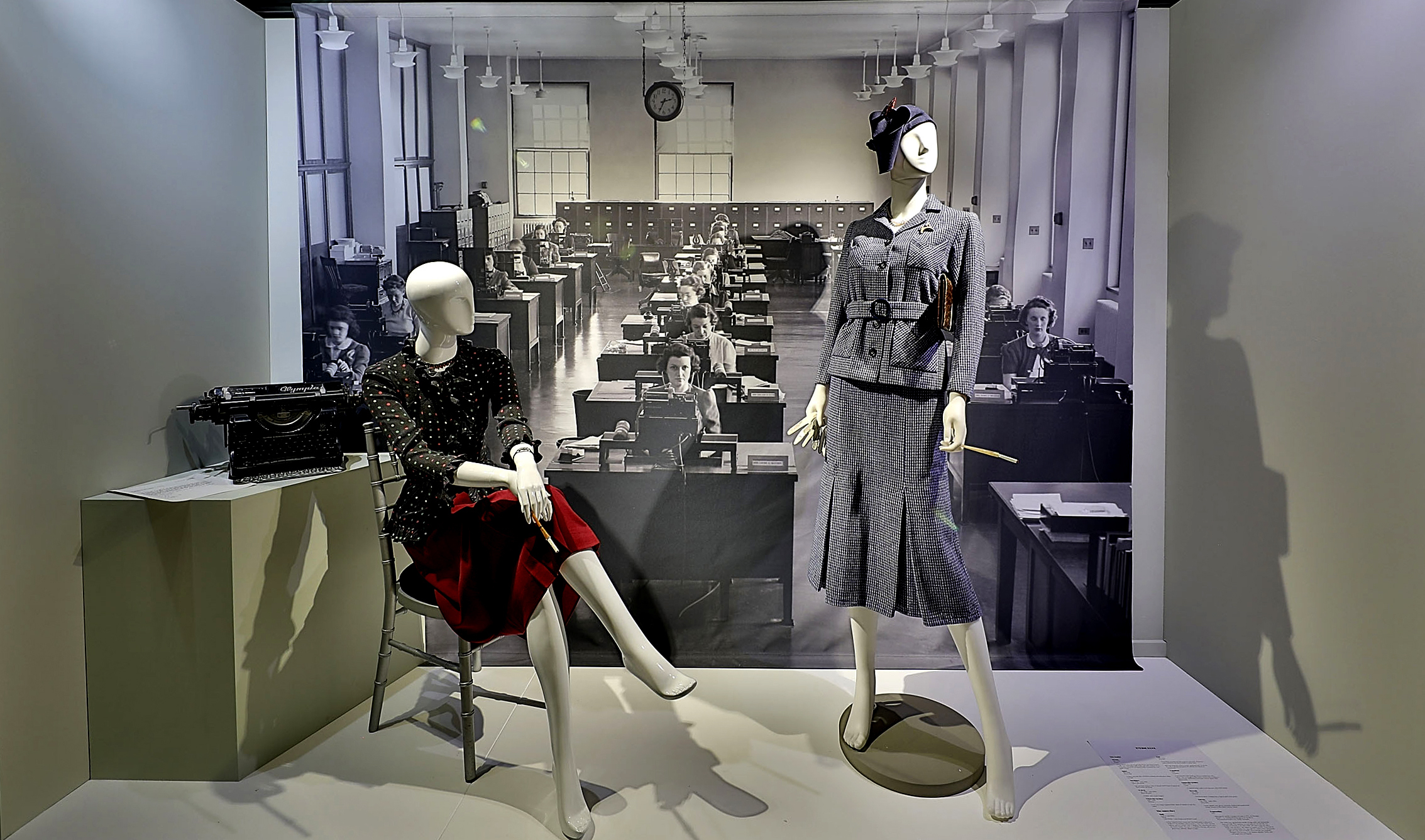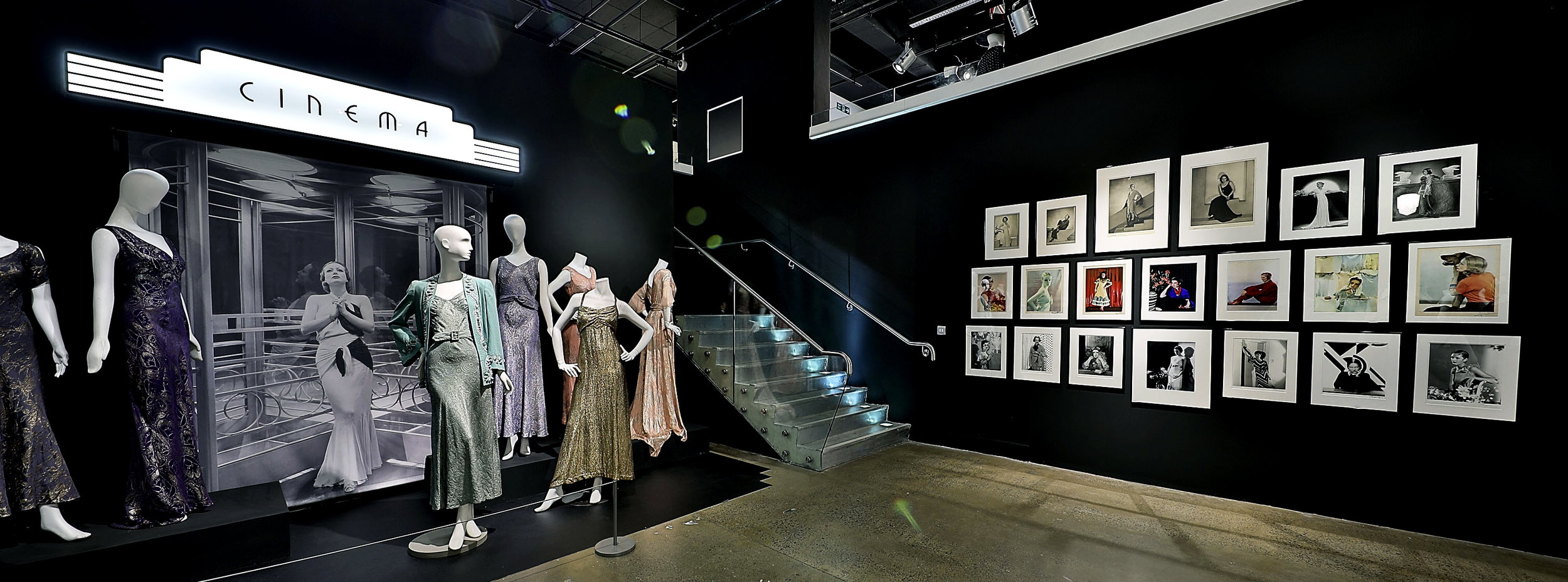Exhibition Review: Night & Day: 1930s Fashion and Photographs
Fashion and Textile Museum, London, October 12, 2018 – January 20, 2019
Wedged between the Roaring Twenties and Dior’s New Look of 1949, the 1930s is quite often a decade eclipsed in popular fashion history. Now the subject of the Fashion and Textile Museum’s exhibition, Night & Day: 1930s Fashion and Photographs is the museum’s unofficial sequel to its 2017 exhibition, 1920s Jazz Age: Fashion and Photographs. Falling under the now-dwindling genre of period fashion exhibitions, the exhibition seeks to explore the “day and evening styles of the decade, complemented by photographs of the stars who championed them”.
As with most, if not all, exhibitions at the Fashion and Textile Museum, the exhibition begins in a small gallery adjacent to the main gallery space. The show is spread over two floors, each divided into five subsections looking at a specific theme relating to the sociocultural milieu of the 1930s. Prior visits and familiarity with the space (I had previously volunteered and conducted participant observation at the museum) tell me that this room is often the first site of contextualization for the visitor, providing essential background information to foreground the premise of the exhibition – almost always comprising of a chronological timeline, accompanying audiovisual material, and a select number of objects in the glass enclosure. In this case, these objects were nine evening sequin gowns, print media and a projected series of old television advertisements, all dating back to the 1930s.
This first room purports to introduce the aftermath of The Great Depression of 1929, particularly on the American market. Upon entering the space, it becomes immediately apparent that this exhibition is not seeking to challenge, as it entirely aligns itself to some of the most recognizable and widely assumed tropes and elements of the decade. Art Deco typefaces, fast-paced commentator voiceovers and black and white moving images grant the visitor convenient contextual access, even if they have little specialist knowledge on the 1930s. The themes of the exhibition, mapped out in a floor plan found in the first few pages of the accompanying pamphlet, are titled after popular songs of the era, along the likes of ‘Whistle While You Work’, ‘Somewhere Over the Rainbow’, ‘Life is Just a Bowl of Cherries’, and ‘Someday My Prince Will Come’. Even the distinctively retro graphic design of the pamphlet subscribes fully to the visual aesthetics of the decade. The show’s art direction comes across as predictable and perhaps even caricatured, but ultimately plays into the simplicity of the curatorial intention – to showcase the sartorial styles of the 1930s.
“The exhibition essentially deals with two themes that defined the 1930s: escapism and the everyday.”
Punctuating the end of the second section, ‘Whistle While You Work’, were two velvet dresses, one from the early 1930s, and one from the late 1930s, juxtaposed next to each other to demonstrate the shift in silhouette by the end of the decade. There are, however, no object labels to indicate details of exact provenance, although fairly vague information such as “Early 1930s, Velvet” is found under each garment description in the pamphlet. This is the case for all the garments in the exhibition, and reason behind this decision to pack this information into a separate pamphlet soon becomes clear as the visitor progresses to the main gallery space. One of the first displays you encounter is a staged nightclub with close to 30 dressed mannequins on a checkered dance floor (‘Let’s Face the Music and Dance!’). The subsequent themed displays in the exhibition also take the form of tableaux comprised of multiple dressed mannequins with the exception of one or two figures in gestured stances, backdropped by a roll-screen image of a relevant setting. The night club display, in particular, is occupied by a majority of headless mannequins, a pair of headed mannequins mid-dance, two separately seated figures, and a solitary lounge singer (complete with a wig and microphone stand) positioned on a higher plinth in the back of this tableau. The resultant effect is one of disjuncture, as both the placement and gestures seemed arbitrary and haphazardly appointed. The intended setting of a night scene is evident from the staging, but it fell short in conveying the energy and activity of this cultural pastime. The use of narrative tableaux in fashion exhibitions can be very evocative through its performative representation of the body, but here that potential was lost in the partial, incomplete choreography – even if the display apparatus is ultimately static. Equally, footwear seemed a pertinent element in this particular tableau, but was entirely absent from this ensemble.
The use of fashion photography is a key element in this exhibition, as evident from the title of the show. Occupying a full wall across the staged night club, the photography display features work by three of the leading studio photographers at the time, Dorothy Wilding, Madame Yevonde and Paul Tanqueray. The exhibition essentially deals with two themes that defined the 1930s: escapism and the everyday, and it is clear that the first floor delves into the former, and the second into the latter. Fashion photography here is posited as an escapist medium through which ideals of glamour were indulged in, cushioned by the surrounding sections touching upon other leisure outlets such as the nightclub (‘Let’s Face the Music and Dance!’) and the cinema (‘Somewhere Over the Rainbow’). The subjects captured in these photographs were mostly of celebrity status and upper class, posing a notable juxtaposition to the clothing actually on display, which belonged to middle class women. Borrowed from private collectors Cleo and Mark Butterfield of C20 Vintage, these clothes were supposedly the best clothes of their former wearers and ape the fashions of the day based on styles by designers such as Vionnet. It is interesting then to consider if precise details on provenance were even possible, seeing as these garments were likely either self-made, mass-produced and store-bought. While fashion photography is not usually used as documentative material due to their highly-stylized nature, employing them here to highlight the aspirational tendencies of the 1930s served as a contextual aid.
Contextual aid often seems to be carried out rather literally, particularly in the instances of the three tableaux that compose the penultimate section of the exhibition, ‘Women at Work’. The use of props in this context merely serve to set a scene, but whether they are necessary to the visitor’s understanding of the information at hand is debatable, especially since the very stances and positions of the mannequins in relation to each other feel sufficient in that respect. Additionally, the sheer number of garments employed in this exhibition may come across as overwhelming at first – the show houses over 100 pieces, all organized and arranged in close proximity to one another. But because the value of these garments lie in their visual repetition and not their creators, it is perhaps justified that the curator has opted for a ‘strength in numbers’ approach. That said, the exhibition could have benefitted from more immersive displays by incorporating the museum’s existing structures into the exhibition design. Elements such as the staircase could have been visually and spatially integrated to establish a thematic link to the rise of the department store, something that was touched upon in the section, ‘The Way You Wear Your Hat’. Staircases continue to be key structures in department stores today, and recalling that material trace as threshold could have suspended the visitor experience even further, beyond just visual, and occasionally, aural means of doing so.




